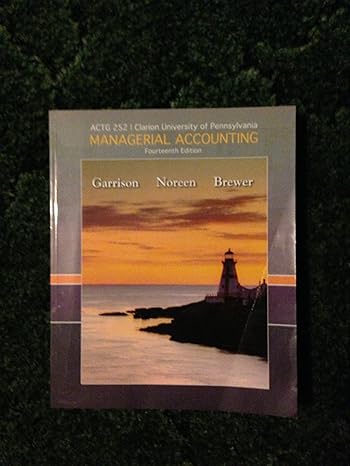yes please answer them all correctly as possible. 
Question 2 Definition: Let F be a field of prime characteristic p *0. Let q =p", h e Z+. Consider any n x n(q 1) matrix A = (aj) over F. Define, only for these kinds of matrices, det,(A), the q-determinant of A, as the sum of all products of elements of A, one in each column, and q - 1 in each row. (There are no minus signs in this formula, unlike the determinant of square matrices. As a polynomial the formula has degree n(9 - 1).) a) Verify that for n x n matrices over a field of characteristic 2, det2 = det, the usual determinant of square matrices. Hint: -1 = 1 in any such field. Hint: permanent function. [5] b) Consider 2 x 4 matrices A over GF(q). How many such matrices are there? [5] a b d c) If such a matrix over GF(9) is A = why is e f g h) det3(A) = abgh + acfh + adfg + bceh + bdeg +cdef defined for A? [5] d) In the following questions let A be over any field of characteristic 3. Let B be a matrix obtained from A by adding k times one row to the other. Show that detz(B) = detz(A)..[10] e) If the first two columns of A form an identity matrix, what is detz(A)? Hint: what is the permanent of a matrix. [5] f) If the first and second columns of A are identical (a = b,e =f), and so are the third and fourth columns of A (c = d, g = h), show that detz(A) is the square of the ordinary determinant of some matrix. [10] Motivation: Question Q2(f) has a straight-forward generalisation to p-determinants of general (p 1)*(p 1)2 matrices was used in a proof (2010) of Rotas basis conjecture for square matrices of size p 1. Rota's basis conjecture says that if one has an m X m matrix, each entry of which is a vector in FM, F some field, and if in each column there is a basis for FM, then the entries in each column may be permuted so that also every row of the matrix contains a basis. This conjecture has been proved only for m = p + 1, and perhaps only a few other cases. It is the evidence for small cases that leads to bigger things. Question 2 Definition: Let F be a field of prime characteristic p *0. Let q =p", h e Z+. Consider any n x n(q 1) matrix A = (aj) over F. Define, only for these kinds of matrices, det,(A), the q-determinant of A, as the sum of all products of elements of A, one in each column, and q - 1 in each row. (There are no minus signs in this formula, unlike the determinant of square matrices. As a polynomial the formula has degree n(9 - 1).) a) Verify that for n x n matrices over a field of characteristic 2, det2 = det, the usual determinant of square matrices. Hint: -1 = 1 in any such field. Hint: permanent function. [5] b) Consider 2 x 4 matrices A over GF(q). How many such matrices are there? [5] a b d c) If such a matrix over GF(9) is A = why is e f g h) det3(A) = abgh + acfh + adfg + bceh + bdeg +cdef defined for A? [5] d) In the following questions let A be over any field of characteristic 3. Let B be a matrix obtained from A by adding k times one row to the other. Show that detz(B) = detz(A)..[10] e) If the first two columns of A form an identity matrix, what is detz(A)? Hint: what is the permanent of a matrix. [5] f) If the first and second columns of A are identical (a = b,e =f), and so are the third and fourth columns of A (c = d, g = h), show that detz(A) is the square of the ordinary determinant of some matrix. [10] Motivation: Question Q2(f) has a straight-forward generalisation to p-determinants of general (p 1)*(p 1)2 matrices was used in a proof (2010) of Rotas basis conjecture for square matrices of size p 1. Rota's basis conjecture says that if one has an m X m matrix, each entry of which is a vector in FM, F some field, and if in each column there is a basis for FM, then the entries in each column may be permuted so that also every row of the matrix contains a basis. This conjecture has been proved only for m = p + 1, and perhaps only a few other cases. It is the evidence for small cases that leads to bigger things







